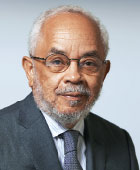Creative Writing and Psychiatric Rehabilitation

These days it feels like a blessing to receive some positive news in my email inbox. This time it arrived in a message from Fellowship Place, a health care agency created well over 50 years ago. It has been serving adults living with mental illness in the Greater New Haven area of Connecticut. Fellowship, as many in the mental health community call it affectionately, is widely known for offering rehabilitation services that include supportive housing, vocational training, and homeless engagement. The objective is wellness, independence, and meaningful living. There are also programs that promote creative expression through painting, writing, and music. The email message contained the winter 2021 issue of The Beacon, Fellowship’s literary journal.
Perusing the 10 pages of text brought back the pleasure I took in writing “Visibility in a Psychiatric Hospital’s Museum” (Psychiatric News). That column was an account of my visit to a painting exposition at Paris’s Sainte-Anne Psychiatric Hospital. The creative work had been done by individuals receiving care at the hospital. I remember thinking about the role of the visual arts in our treatment plans and the cost in human and financial resources, institutional commitment, building space, and the technical expertise of teachers.
The Beacon is a wonderful example of what the engagement in writing can produce. About 14 individuals took part in this edition of the journal, which encompassed both poetry and short essays. Both forms of writing recounted personal experiences of times gone by and recollections of encounters with places and people. One prose piece talked of breeding a new, enormous vegetable from the cabbage family. Another author contemplated outer space as the last genealogical frontier. On the very first page of the journal, there was a note mentioning that some of the contributions were written while members of the group were confined during the COVID-19 pandemic. One writer mused about lessons learned from 2020, such as the acquisition of inner peace. Notice was taken of some similarity between the confinement and the movie story of Anne Frank. Someone regretted that COVID-19 had caused suspension of a theater group’s meetings, which resulted in a feeling of disrupted friendship. The loss was partly diminished by a cat’s companionship.
I wondered whether one of the writing group’s exercises may have focused on personal identity, as several poets addressed the subject.
Who do I want to be?
I want to be a high school graduate.
I want to be a Christian author.
I want to be a loving wife, mother and friend.
One writer was more contemplative:
Sometimes I am confused.
Sometimes I am confident.
Most of the time, I am love.
This is me too.
Another invoked a sense of freedom:
Who do I want to be?
I want to be free.
I want to be at peace.
I want to be awake.
This is who I am.
This is who I want to be.
This poet seemed focused on the goings-on within the environment:
I enjoyed reading the writing quietly. Then I recited the language out loud and found myself transported by my soliloquy. The words took on life, and I could feel the writers’ reflection and imagination at work. In my reading, I grasped why experts like Deborah Philips, Liz Linington, and Debra Penman (Writing Well: Creative Writing and Mental Health, Jessica Kingsley, Philadelphia, 1999) recommend creative writing’s place in mental health therapeutics and rehabilitation. It facilitates the expression and management of memories, while also promoting trust and community. There is a positive effect on concentration and orientation. People who write note their enhanced sensitivity to others and awareness of their surroundings. This comes through practiced observation and imagination, as expressed in The Beacon.
While basking in the warmth of a drowsy, blazing, hot sun,
Friendly, furry, brown squirrels play, jump and run,
Mating, multiplying, take a husband or wife,
Eating acorns, and nuts,
Surviving,
Grasping hold of life,
Swiftly climbing green leafy oak trees,
Inhaling fresh air from a summer breeze,
As colorful rainbows light up the sky with their smile,
In their own language, squirrels sing the love song of the wild. ■



